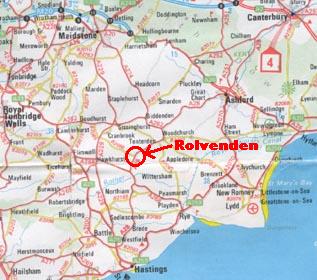Monypenny of Pitmilly
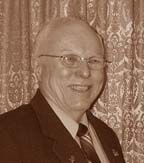 This page was set up by Robert Sewell in June 2006 to show the family of
Elizabeth Charlotte Monypenny who married {Reverend} Henry Doyle Sewell
in 1844. Robert Sewell graduated from McMaster University (Hamilton,
Ontario, Canada) in 1967 with a B.Sc. degree in chemistry. After
a year of studies at the University of Toronto's College of Education,
he taught high school science in Collingwood, Ontario for a year and then
taught chemistry, physics and general science in Hamilton, Ontario for
twenty-nine years. Robert Sewell retired from teaching in June 1998.
This page was set up by Robert Sewell in June 2006 to show the family of
Elizabeth Charlotte Monypenny who married {Reverend} Henry Doyle Sewell
in 1844. Robert Sewell graduated from McMaster University (Hamilton,
Ontario, Canada) in 1967 with a B.Sc. degree in chemistry. After
a year of studies at the University of Toronto's College of Education,
he taught high school science in Collingwood, Ontario for a year and then
taught chemistry, physics and general science in Hamilton, Ontario for
twenty-nine years. Robert Sewell retired from teaching in June 1998.
Click
to contact Robert Sewell
Please visit the Sewell
Genealogy Site Map for other pages in this series.
The information presented here comes from the following
sources:
-
Notes of Henry de Quincy Sewell where it is written: "Elizabeth
Charlotte Monypenny, daughter of the late Robert Monypenny of Merrington
Place, Kent, married on October 25, 1844 to {Reverend} Henry Doyle Sewell.
The marriage was by {Reverend} J.I. Monypenny, Vicar at Hadlow, Kent."
-
"The Pedigree of the Sewell Family
- from 1540 - Twelve Generations" copied by Margaret Evelyn Sewell (born
on April 2, 1911 and died in 2000) who married to Robert Arthur Silvey
on December 27, 1941 where it is written that Elizabeth Charlotte Monypenny
was "of Maytham Hall, Rolvenden."
-
Doronée Monypenny: Letters,
Autumn 2003 and Spring 2004
-
Evelyn Ferguson: Letters,
Autumn 2004
-
Sir Bernard Burke: The General
Armory, London, 1884
-
Sir Bernard Burke: History of
the Landed Gentry, London, 1898
-
Sir John Balfour Paul: The
Scots Peerage, 1904 - 1914
-
Sir Bernard Burke: Burke's
Landed Gentry, Edited by Peter Townsend. London, 1969
-
A.C. Fox-Davies & J.P. Brooke-Little:
A
Complete Guide to Heraldry, London 1985
| The website of the Kent
Archaelogical Society featuring the St. Mary the Virgin Church in Rolvenden,
Kent where an excellent record of tombstone inscriptions
is to be found. John Rees of Surrey, a nephew of Margaret Evelyn
(Sewell) Silvey referred me to this web site; and the following genealogy
has been prepared with the help of these inscriptions.
photograph of a watercolour 1809
from the Kent
Archaeological Society
St. Mary's Location:
At the intersection of the A28 and B2086, about 15 miles south Maidstone
and 15 miles north of Hastings.
|
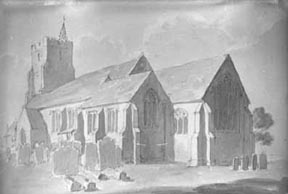 |
Ancient Origins
The story of the Monypenny Family begins, as do
the stories of many families, with a legend:
| Tradition has it that Malcolm
III Cænnmor, King of Scotland, being obliged to flee after his father
Duncan
the Gracious
was killed by Macbeth in 1040, found refuge with a wealthy
French merchant named James Dauphin. When the King sought to recover
his
Kingdom, he asked his friend for a few pennies, whereupon James Dauphin
replied, "Not a few pennies but many pennies", and his two sons fought
at the side of the King. When the Kingdom was recovered, the King
gifted to
the eldest son James, the lands of Pitmilly, Fife; and married him to a
lady related to Macduff, Thane of Fife.
- - - or so the story goes.
However, the first of an unbroken
line begins with Ricardus de Moniepennie, and it is with him we will begin
this genealogy. |
Generation One
Ricardus de Moniepennie who
was granted a charter by Thomas, Prior of St. Andrews, of the lands of
Pitmulin ("quam Malisius tenuit") in 1211.
Ricardus married and had a son:
Generation Two
John de Moniepennie who was
granted a charter of Mirton to Nichol of Milton in 1263.
He married and had a son:
Generation Three
John Monypenny who swore
fealty to Edward I of England on March 14, 1295.
He married and had a son:
Generation Four
—— Monypenny who married
circa 1306 the daughter and heir of Sir Alexander Ramsay of Leuchars, Fifeshire,
and they had a son:
-
Thomas Monypenny of Pitmilly
Generation Five
Thomas Monypenny of Pitmilly
who received a charter of part of Leuchars from Thomas Hay circa 1329.
He married and had a son:
Generation Six
John de Monypenny who was
granted a charter by John, Prior of St. Andrews, of the lands of Pitmilly
"which had pertained to the said John's ancestors" circa 1347. He
was one of the plenipotentiaries sent by King David II to mediate peace
with England in 1335/36.
John married and had a son:
Generation Seven
John Monypenny of Pitmilly
who was recorded between 1400 and 1421; he married and had a son:
Generation Eight
Thomas Monypenny of Pitmilly
Died in 1427
Thomas married Christian Keith, a daughter of Sir Robert
Keith, an ancestor of the Earls Marischal, and they had two sons:
-
John Monypenny
-
Sir William Monypenny who married in 1410 to Marjorie
Arbuthnott, daughter of Philip Arbuthnott and they had, with other issue,
a son:
-
Sir William Monypenny, 1st Lord Monypenny (created
circa 1460) was born in 1411 and died circa 1485. He went to France
in the train of Princess Margaret of Scotland in 1437 and soon afterwards
entered the service of the Dauphin (later Louis XI). He was Chamberlain
to Charles VII and Louis XI, and was knighted by the Comte de Dunais at
the Siege of Rouen on October 16, 1449. He was frequently employed
on diplomatic missions by both the Scots and French Kings, particularily
in negotiating royal marriages. He received considerable grants of land
in Scotland and in France, where he was known as the Sieur de Concressault,
He was also granded lands in Berry and was appointed Seneschal of Xantogne
(Saintonge) in 1473. Sir William Monypenny married Katherine Stewart, and
they had, with other issue, the following children:
-
Alexander Monypenny, 2nd and last Lord Monypenny in
the Peerage of Scotland, and Vicomte d'Omoy in France who died circa 1528.
He disposed of all his Scottish estates and resided entirely in France.
He married Marguerite Flockhart, daughter of Patrick Flockhart, Captain
of the Scots Guard and Seneschal of Xantogne. They had two sons who died
before their father.
-
William Abbot Monypenny of St. Satur, Bourges who
was nominated Archbishop of Bourges in 1512, but the King refused to confirm.
-
Elizabeth Monypenny who married
her second cousin William Monypenny of Pitmilly.
Arms of Monypenny of Pitmilly
| The arms of Lord Monypenny of Pitmilly are described
as "Quarterly, 1st and 4th, or, a dolphin naiant azure, finned gules; 2nd
and 3rd, gules three crosses crosslet fitchée issuing out of as
many crescents argent."
. . . Sir John Balfour Paul: The Scots Peerage,
1904 - 1914
This means "1st and 4th quarters, gold with a blue dolphin
with red fins drawn horizontally as if swimming; 2nd and 3rd quarters,
red with three silver crosses having the three upper ends terminating in
three little crosses and pointed like a dagger at the bottom, each one
on top of a crescent with the points turned up."
Heraldic dolphins are strangely dissimilar from the real
creature and are shown with fins similar to those of a fish. |
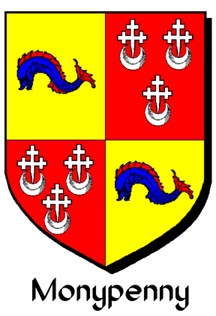 |
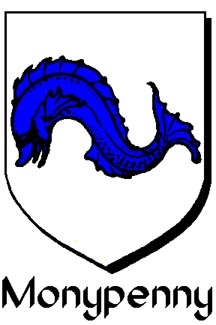 |
The arms of Monypenny are described
as "Argent, a dolphin naiant azure" which means "a silver shield with a
blue dolphin drawn horizontally as if swimming" (left)
The arms of Monypenny of Pitmilly
are described as "Quarterly, 1st and 4th, argent, a dolphin naiant azure,
for Monypenny; 2nd and 3rd, azure three crosses crosslet fitchée
issuing out of as many crescents argent., for Cathcart. (right)
(Sir Bernard Burke: The
General Armory, London, 1884, page 699)
It is unclear how the Cathcart Family
is connected with the Monypennys. |
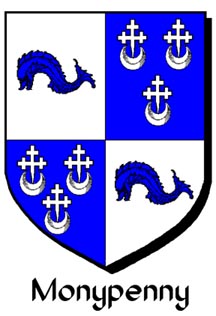 |
Generation Nine
John Monypenny of Pitmilly
Died in 1448
John married and had the following children:
-
Thomas Monypenny
-
another son
Generation Ten
Thomas Monypenny of Pitmilly
Died in 1454
Thomas married and had the following children:
-
William Monypenny who married
firstly his second cousin Elizabeth Monypenny,
daughter of William, 1st Lord Monypenny and secondly Elizabeth Balfour.
He died without issue in 1466 and was succeeded by his younger brother
Thomas.
-
Thomas Monypenny
-
two additonal sons
Generation Eleven
Thomas Monypenny of Pitmilly
Died in 1479
Thomas married Margaret Wemyss and they had a son:
-
David Monypenny
-
Margaret Monypenny
Generation Twelve
David Monypenny of Pitmilly
who was living in 1488/89, married Jonet Monypenny and had two children:
-
William Monypenny
-
Elizabeth (or Isabella) who married John Beaton de
Balfour. Their son was Cardinal David Beaton (born circa1494, murdered
on May 29, 1546), Archbishop of St. Andrews and the last Scottish Cardinal
prior to the Reformation.
Generation Thirteen
William Monypenny of Pitmilly
Died in 1520
William married and has a son:
-
David Monypenny
-
Janet Monypenny
-
Helen Monypenny
Generation Fourteen
David Monypenny of Pitmilly
Born in 1512
Died in 1578/79
David was a prominent supporter of
the Reform Cause. Following the murder of his cousin, Cardinal Beaton,
he took refuge in St. Andrew's Castle with the conspirators and when the
Castle was captured by the French he was taken prisoner and imprisoned
in Cerbourg Castle. He was later pardoned by Queen Mary, continued
very ardent in the Reform Cause and was again captured by the French.
David married firstly to a daughter
of the 3rd Earl of Rothes and had the following children:
-
David Monypenny
-
Janet Monypenny
David married secondly to Katherine Lundin,
a daughter of Walter Lundin and had by her a son:
Generation Fifteen
David Monypenny of Pitmilly
Died in 1600
David, like his father, was also an
ardent Reformer and was sentenced to forfeiture and banishment for his
uncompromising opposition to the marriage of Queen Mary and Lord Darnley.
David married Elizabeth Monypenny
and they had the folloiwng children:
-
James Monypenny
-
David Monypenny
-
Thomas Monypenny, said to have emigrated to Ireland circa
1610 and returned to Scotland in 1625.
-
William Monypenny
-
Elizabeth Monypenny
| Note: From here on, things tend to
get confusing, so I have set up the names of our direct ancestors, leading
to Elizabeth Charlotte Monypenny who
married on November 25, 1844 to {Rev} Henry Doyle Sewell in maroon
type. I hope this helps.
. . . Robert Sewell
|
Generation Sixteen
James Monypenny of Pitmilly
Died in 1638
James married in 1576 to Euphame Colville, a daughter
of Robert Colville of Cleish and they had the following children:
-
John Monypenny (continued below)
-
James Monypenny (continued
below)
-
{Venerable} Andrew Monypenny who emigrated to Ireland
in 1613 and was in 1618 Archdeacon of Connor. Andrew died without
issue circa 1634.
-
{Reverend} Arthur Monypenny (died in 1658) who emigrated
to Ireland and was Prebendary of Lochmalony, County Down in 1620.
A "Prebendary" is a resident clergyman who is entitled to a share of the
revenues of the church. This was the time of the "Ulster Plantation"; see
James
Monypenny (below) for further information and links. The Monypennys
were likely not very popular with the Irish Catholic native peoples.
Arthur married Mary ____ and they had three sons and a daughter.
-
four additional sons, one of whom may be Henry Monypenny.
-
two daughters
Generation Seventeen
John Monypenny
John married Euphame, a daughter of
Thomas Myrton of Cambo. Euphame appears to have had two previous
marriages to William Rigg of Aitherine and Sir John Scot of Scotstarvit.
John and Euphame had a son:
-
Sir James "The Brave" Monypenny of Pitmilly (continued
below)
John had a second marriage to Susanna
Colville and they had two daughters.
James
Monypenny
James emigrated to Ireland before
1620. This was the time of the "Ulster Plantation" when English and
Scottish settlers were encouraged to emigrate to Ireland. During
the Plantation most of the Irish remained on their lands because the planters
needed their labor, but they remained as tenants rather than owners of
their own land. By 1650, the rights of the Irish Catholic people had been
reduced to little more than that afforded to livestock. For further details,
please click on:
James married in Ireland and had a son:
-
Arthur Monypenny (continued
below)
Generation Eighteen
Sir James "the Brave" Monypenny of Pitmilly
Died in 1657
Sir James married in 1637 to Helenor
Maule, a daughter of William Maule and they had with two other sons and
three daughters:
-
John Monypenny of Pitmilly who died without issue
in 1657 and was succeeded by his brother Alexander.
-
Alexander Monypenny of Pitmilly (1642 - 1712) who
married and had, with other issue, a son:
-
David Monypenny of Pitmilly (born in 1694) who married
and had, with other issue, a son:
-
Lt. Col. Alexander Monypenny of Pitmilly (1726 - December
22, 1801) who married and had, with other issue:
-
David Monypenny of Pitmilly who married but died without
issue, having entailed the Estate of Pitmilly to his brother William Tankerville
Monypenny, failing which to his kinsman {Rev} James Isaac
Monypenny.
-
William Tankerville Monypenny
of Pitmilly who married but died without issue in 1869 when he was
succeeded by his kinsman {Rev} James Isaac Monypenny.
Arthur Monypenny
Arthur married and had two sons, of
whom the elder was:
-
{Captain} James Monypenny
(continued below)
Generation Nineteen
{Captain} James Monypenny, R.N.
Born on October 17, 1670
Died on October 23, 1721 æt. 51
James Monypenny served as First Lieutenant
aboard Sir George Rooke's flagship at the capture of Gibraltar and the
Battle of Malaga in 1704.
| James Monypenny purchased Maytham Hall in
Rolvenden in 1714. The estate dates from Saxon times and at least four
Norman lords had manors here.
Shown here is a photograph (circa 2003)
of Great Maytham Hall which was designed by Sir Edwin Lutyens and built
in 1910 for the Rt Hon H.J. Tennant.
For further details, click on
Great
Maytham Hall
|
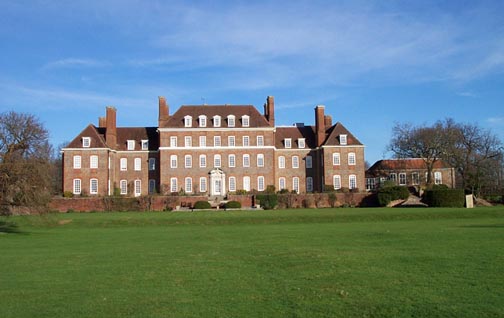 |
James married Mary Gybbon, a daughter of Robert Gybbon
of The Hole House, Rolvenden, Kent. Mary's family, as determined
from inscriptions at St. Mary the Virgin Church at Rolvenden, Kent is outlined
in the following table:
Robert Gybbon [351]
Born circa 1643
Died on October 9, 1719 æt. 76
Robert married Elizabeth
Phillips (born circa 1649, died on October 20, 1691 æt.
41) who was the only child of widow Elizabeth Phillips (born circa 1625,
died on July 13, 1718 æt. 94).
Robert Gybbon
and Elizabeth Phillips had ten children:
-
Elizabeth Gybbon who was buried in St. Clement Danes
Church at London.
-
Edmund Gybbon who was buried in the South Chancel
of St. Mary the Virgin Church, Rolvenden. [358]
-
Phillips Gybbon who married Catherine Bear, daughter
of widow Honor Bear.
-
Robert Gybbon who was buried in St. Clement Danes
Church at London.
-
Ann Gybbon who was buried in the South Chancel of
Rolvenden Church.
-
Elizabeth Gybbon who was buried in the South Chancel
of Rolvenden Church.
-
Mary Gybbon who married
{Captain}
James Monypenny.
-
Richard Gybbon who was buried in St. Clement Danes
Church at London.
-
Ann Gybbon who was buried in the South Chancel of
Rolvenden Church.
-
Margaret Gybbon who was buried in the South Chancel
of Rolvenden Church. [358]
|
Mary Gybbon and {Captain}
James Monypenny had the following children: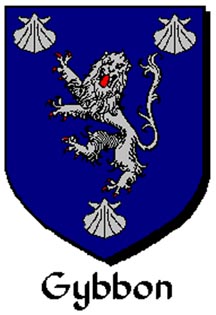
-
James Monypenny who died young and was buried in St.
Ann's Church, Soho, Middlesex.
-
Elizabeth Monypenny who was born circa 1717, died
on July 21, 1760 æt. 43; buried in the North Chancel.
-
Robert Monypenny who was born circa 1719, died on
March 29, 1772 æt. 53; buried in the North Chancel.
-
Phillips Monypenny who died young was buried in the
North Chancel of Rolvenden Church.
-
James Monypenny (continued
below)
Generation Twenty
James Monypenny[349]
Born on October 7, 1721
Died on May 11, 1800 æt. 79
James, the youngest son of James Monypenny
and Mary Gybbon, married Silvestra Blackwell (born circa 1728, died on
February 13, 1818 æt. 90) who was the eldest daugher and co-heiress
of {Reverend} Thomas Blackwell, A.M. Rector of St. Clement-Danes, London.
James and Silvestra had the following
children:
-
Silvestra Monypenny who was born in 1758 and died
young.
-
Elizabeth Monypenny who was born in 1759 and died
young.
-
James Monypenny who was born circa 1759, married Mary
Burt, died in June 1822 æt. 53; interred in the North Chancel.[345]
-
{Reverend} Phillips Monypenny
A.M., of Maytham Hall, Rolvenden, Kent who was Vicar of Hadow, Kent. He
married Charlotte Dering, second daughter of Sir Edward Dering, 6th Baronet
of Surrenden-Dering, Kent. Phillips was born circa 1763 and died
on January 4, 1841 æt. 78. Charlotte, his wife, was born circa
1762 and died on November 12, 1826 æt. 64. They are interred in the
North Chancel of Rolvenden Church. [348]
-
Thomas Monypenny (continued below)
-
Silvestra Monypenny who was born in 1766, married
{Rev} John Hutton, died in 1836.
-
Mary and Arthur Monypenny, both died young.
-
Robert Monypenny (continued
below)
Generation Twenty-one
Thomas Monypenny
Born in July 1763
Died on September 24, 1814 æt. 51, and interred
in the North Chancel.
Thomas married in November 1795 to
Katherine Rutton, a daughter of Isaac Rutton of Ospringe, Kent and they
had the following children:
-
{Lieutenant Colonel} Thomas Gybbon-Monypenny,
M.P. who was born on November 7, 1796 and died on January 15, 1854.
On his succession to The Hole House, Rolvenden in 1837 he assumed the name
and arms of Gybbon in addition to Monypenny. Thomas was Lt. Col. of the
West Kent Militia, M.P. for Rye and he fought at Waterloo as Ensign of
the 30th Foot. He married in 1818 to his 1st cousin, Silvestra
Rose Monypenny, eldest daughter of his uncle Robert Monypenny of Merrington
Place and they had four sons and three daughters:
-
Sylvestra Elizabeth Gybbon-Monypenny (b. Dec 1820)
-
{Captain} Robert Thomas Gybbon-Monypenny (1823 - December 27, 1893) of Great
Maytham Hall which passed out of the family on his death. Robert married
Janet Philips Burney (d. 1863) Robert and Janet had six children:
- Henry Thomas Gybbon-Monypenny b.1850 emigrated to New South Wales, Australia. Still living 1900.
- Edward St Leonards Gybbon-Monypenny b. 1852 Tea Planter, Ceylon. Still living 1900.
- Ada Jessie Gybbon-Monypenny (1854-1872)
- Frederick Burney Gybbon-Monypenny (1856-1898)
-
Herbert d'Arblay Gybbon-Monypenny (1858 - 1930) who married Margaret Catherine
Sterndale. Click Here to see photographs of the family. Herbert and Margaret had six children:
-
Robert d'Arblay Gybbon-Monypenny b. 1892 m. Nina Dorothea Brenda Reeve &
had issue; 1 son 2 daughters.
-
Herbert Reginald Dauphin Gybbon-Monypenny CBE (1895-1988) m. Marjorie Logan
Aird Reid (1909-1969) and had issue; 2 sons 1 daughter. His second son:
-
Peter John Gybbon-Monypenny who suceeded his kinswoman Joan Monypenny of
Pitmilly as 29th Laird of Pitmilly. He is married with 2 sons and a daughter.
-
Phillips Burney Sterndale Gybbon-Monypenny (1898-1914)
-
Bertie Crawfurd Gybbon-Monypenny
-
Richard Montague Gybbon-Monypenny (1905-1969) who was employed by the Colonial
Service in Ceylon. Richard married Annie Mary Olive "Min" York. To visit their homes, Click Here. Richard and Min had two sons:
-
Richard Brian Gybbon-Monypenny (1934 - 2007) who married Claire Margaret
who kindly shared this family information. Claire lives in Australia
where she has children, grandchildren, and a great-grandchild. Among Brian and Claire's children is:
- Sue Gybbon-Monypenny who married and has children.
-
William Gybbon-Monypenny (1935 - 1982) who married Mary Anne (1939-1987). William and Mary had two daughters:
- Sarah Ann Gybbon-Monypenny who married and has children.
- Karen Marie Gybbon-Monypenny
-
David Cathcart Gybbon-Monypenny who married Dorothy Yates and had three childred, a son and two daughters.
- Ethel Maude Gybbon-Monypenny (b. 1861) was the 6th child of {Captain} Robert Thomas Gybbon-Monypenny and Janet Burney.
-
William David Cathcart Gybbon-Monypenny (b. May 31, 1825)
-
Thomas Phillips Blackwell Gybbon-Monypenny (1828 - 1874, perhaps buried at Kensal
Green Cemetery, London?)
-
Emily Catherine Gybbon-Monypenny (b. August 15, 1830, baptised August 20,
1830)
-
Laura Dunn Gybbon-Monypenny (b. November 30, 1832, baptised 8 January 8,
1833)
-
Richard James Lamb Gybbon-Monypenny (b. July 7, 1839, baptised October
20, 1839)
-
{Reverend} James Isaac Monypenny of Pitmilly
who
was born on January 19, 1799 and died on December 18, 1881. James
succeeded his kinsman William Tankerville Monypenny
of Pitmilly (who married but died without issue in 1869) as the 25th
Laird of Pitmilly. James was the Vicar of Hadlow, and it was he who
performed the marriage between {Rev} Henry Doyle Sewell and Elizabeth Charlotte
Monypenny on November 25, 1844. James Isacc Monypenny married in
1828 to his 1st cousin, Mary Blackwell Monypenny, a
daughter of his uncle Robert Monypenny of Merrington Place.
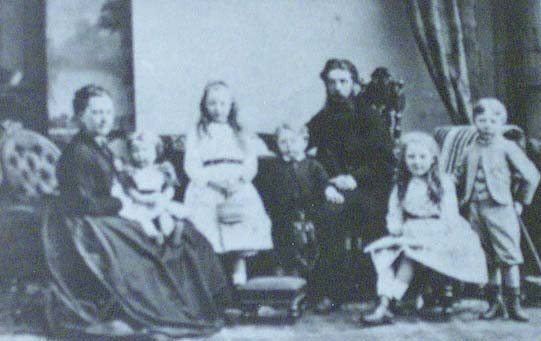 | Family of
James Issac Monypenny
and
Mary Blackwell Monypenny
This early photograph
is thought to date from the 1840's. |
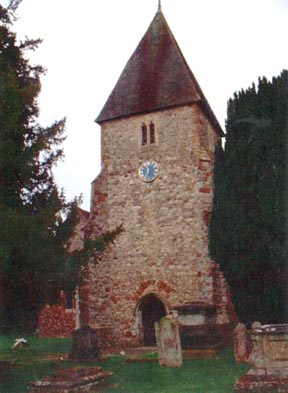 image courtesy of St. Mary's Church, Hadlow
image courtesy of St. Mary's Church, Hadlow
|
St. Mary's Church, Hadlow, Kent
"The first known mention of the church is in the Textus
Roffensis (or Rochester Register) of 975 AD. This first church was probably
a timber church. It is likely that the timber building lasted until about
1018 when the land of Hadlow was given to Eddeva (also Edith and
Eadgyth) - Edward the Confessor’s queen. It is thought that she rebuilt
the church at this time in stone. The lower part of the tower dates from
about this time as evidenced by the long and short technique on the
NE corner"
For more about St. Mary's, please click to visit
St. Mary's
Church, Hadlow
{Rev} James Issac Monypenny was Incumbent at St Mary's
from 1840 to 1871; and it was here that Elizabeth Charlotte
Monypenny was married to {Rev} Henry Doyle Sewell on October 25, 1844. |
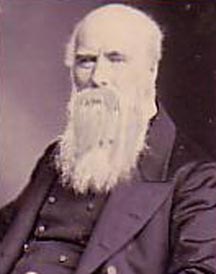 |
Rev. James Isaac Monypenny
and
Mary Blackwell Monypenny
|
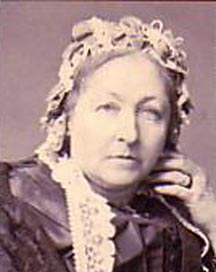 |
portraits courtesy of
Tim Sinclair
great X2 grandson of James and Mary
James and Mary had the
following children:
-
Mary Catherine Monypenny; born on December 3, 1829 and died on December
10, 1830.
-
Margaret Dunn Monypenny; born on June 13 1832 and died in 1920. Margaret
married in 1860 to Rev.Alexander James Manson and they didn't have children.
-
Adelaide Elizabeth Monypenny; born on October 19, 1833 and
died on September 23, 1910.
-
James Robert Blackwell Monypenny of Pitmilly, 26th Laird of Pitmilly, J.P.,
M.A. Trinity College, Cambridge, Hon. Colonel 4th Batt. the Buffs (East
Kent Regt.) Born September 25, 1835 and died May 22,1886. James married
Mary Elizabeth Lane, a daughter of {Reverend} Charlton Lane, M.A., Vicar
of Hamstead, Middlesex and left issue with three other sons and two daughters:
-
Charlton James Blackwell Monypenny of Pitmilly, 27th Laird of Pitmilly
(1867 - 1947) who married Emila Sybil Wetenhall, 3rd daughter of Cecil
Algernon Salisbury Wetenhall of Stamrick, Northhampton and left issue:
-
Pheobe Monypenny, heiress of Monypenny of Pitmilly, who resigned in favour
of her 2nd cousin Joan Cranfield Monypenny.
Charlton J. B. Monypenny emigrated to South America where he re-married
and had 3 more daughters and one son, also raised 2 step-sons. Among the
grandchildren from this second marriage are:
-
Evelyn M. Ferguson who shared information used to prepare this genealogy.
- Roger Fry
-
Mary Beatrice Blackwell Monypenny; born on March
15, 1872 and died in 1932. Mary (frequently referred to as Mary
Blackwell Monypenny) married her 1st cousin {Reverend} Sinclair Howard
Monypenny (see below).
-
{Reverend} Phillips Howard Monypenny, B.A., born on 13 June 13, 1837 and
died on February 23, 1913. Phillips married first Emma Melasina MacMunn,
4th daughter of Dr. John MacMunn, M.D., of Rutland Square, Dublin, leaving
issue with other sons and daughters. Phillips married second to Isobel
Seymour Peat.
-
James Egerton Howard Monypenny (1864 - 1931) who married Gladys Gwendoline
Cranfield, a daughter of {Reverend} Robert Cranfield leaving issue:
-
Joan Cranfield Monypenny of Pitmilly, 28th Laird of Pitmilly (born 1906)
who succeeded her kinsman Charlton James Blackwell Monypenny on the resignation
of her 2nd cousin Phoebe Monypenny.
-
{Reverend} Sinclair Howard Monypenny, (1870 - 1951), Vicar of Hadlow 1908
- 1951 who married his 1st cousin Mary Beatrice Monypenny (see above) leaving
issue:
-
Mary Theodora Howard Monypenny (born 1897)
-
Douglas Phillips Sinclair Monypenny (born 1903) who married his 1st cousin
Doreen Ilbert Monypenny
-
John Blackwell Sinclair Monypenny (1911 - 1940) Squadron Leader R.A.F.,
killed in action, July 19/20, 1940.
- Lionel Howard Monypenny (1880 - 1954) who
married Christina Patterson (1888 - 1991). This family came to Canada
and is thought to have settled in Alberta. Lionel and Christina
are known to have had two daughters:
- Elizabeth Howard Monypenny (1917 - 1997)
- Joyce Monypenny (1919 - 2007)
Lionel Howard Monypenny and Family
Photo submitted by Evelyn Ferguson
sent to her by a living nephew
of Christina. |
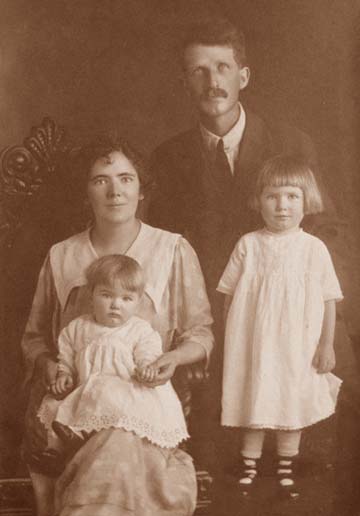 |
-
Charlotte Jane Monypenny; born on March 20, 1839 and died in 1884.
Charlotte married in 1860 to Fred. Arthur Littleton and they had 5 sons
and 5 daughters.
-
Henrietta Silvestra Monypenny; born on August 10, 1841 and died in 1884.
Henrietta married Rev. Charles Grant and they had a daughter.
-
Emma Susannah Monypenny; born on October 27, 1844 and died in 1908.
-
Mary Louisa Gordon Monypenny; born on April 19, 1848 and died in
1896. Mary married first in 1872 to Ralph Tebbit and second to Robert Calwell
(an American).
-
Catherine Silvestra Monypenny who was born in 1800,
died on October 8, 1825 and was buried at Hythe, Kent.
-
Phillips Monypenny who died young.
-
Mary Judith Monypenny who was born on January 21,
1803 and died unmarried in London in 1846.
-
Phillips Monypenny who was born on August 14, 1804.
He married Jane, a daughter of Thomas Castle, died 1845.
-
Elizabeth Monypenny who was born in 1806, married
at Rolvenden in 1836 to {Rev} Henry Davis of Dorsetshire and died in 1842.
Elizabeth and Henry had two children:
-
Henry Thomas Staines Davis who was born on May 10, 1837
-
Louise Elizabeth Davis who was born on January 11, 1839
-
William Monypenny what was born in 1804 and died in
1808.
-
William Backhouse Monypenny who was born on December
19, 1808, was a Captain in the Royal Navy, and died on November 29, 1859.
-
Robert Honywood Monypenny who was born on March 21,
1810. Robert was a Lieutenant in the 4th or King's Own Regiment; he died
in 1839 and was buried at Bangalore. Robert was engaged to marry his 1st
cousin Elizabeth Charlotte Monypenny, but he died
before the marriage could take place.
Robert
Monypenny of Merrington Place near Rolvenden,
Kent. [347]
Born on January 28, 1771
Died on January 14, 1834 æt. 62 years and 11 months
Merrington Place is located about a half mile south east of Rolvenden, Kent on the west side of Hastings Road. Click on Rolvenden
for a close-up showing both Merrington Place and Maytham Hall courtesy
of Multimap.com; or if this doesn't work go to http://www.multimap.com/,
search for "Rolvenden" and zoom in to 1:25,000 scale.
Robert married in 1796 Elizabeth Dunn,
a daughter of James Dunn of Merrington, Durham. Elizabeth was born in 1771
and died on April 28, 1833 æt. 61 years and 10 months.
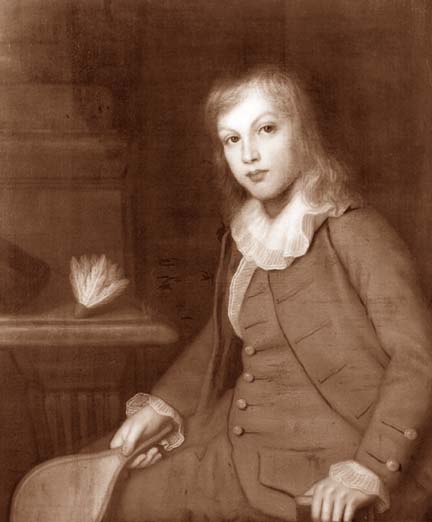 | Robert Monypenny
circa 1780Robert Monypenny (1771-1834) aged 8, ready to play Battledore and
Shuttlecock, an early game similar to Badminton.
This game is played by two persons with small rackets,
called battledores, made of parchment
or rows of gut stretched across wooden frames, and shuttlecocks,
made of a base of some light material, like cork, with trimmed feathers
fixed round the top.
The object of the players is to bat the shuttlecock from one to the
other as many times as possible without allowing it to fall to the
ground. For further details, visit Wikipedia. | |
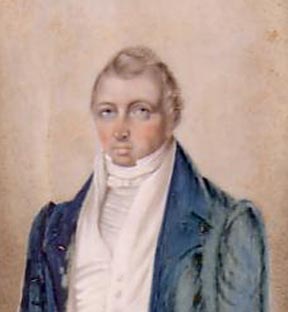
|
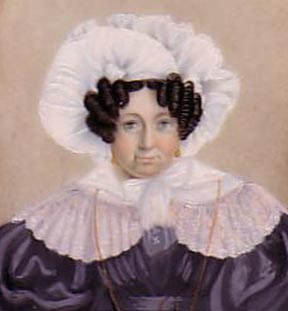
|
|
Robert Monypenny
|
Elizabeth Dunn
|
portraits courtesy of
Evelyn Ferguson
great X3 granddaughter of Robert and Elizabeth
Robert and Elizabeth had the following children:
-
Silvestra Rose Monypenny who
was born on August 28, 1798 and married on January 8, 1818 to her 1st cousin
{Lieutenant
Colonel} Thomas Gybbon-Monypenny, M.P., eldest son of her uncle Thomas
Monypenny. Silvestra and Thomas had four sons and three daughters.
-
Robert Joseph Monypenny the eldest son who was born
in March 1800, died at Maytham Hall on September 4, 1842 æt. 42;
interred in the North Chancel. [347]
Robert married Susan Dearden, a daughter of James Dearden of Handel Hall,
Lancaster. They had a son
-
Robert Phillips Dearden Monypenny who was born in 1836.
-
James John Monypenny second son who was born circa
1804, died on December 5, 1821 æt. 17 and buried in Rolvenden Churchyard,
Section C on the North side of the Church. [106]
-
Phillips Dunn Monypenny who was born in 1806, died
on February 16, 1810 æt. 3 years and 6 months and buried in Rolvenden
Churchyard, Section C on the North side of the Church. [106]
-
Mary Blackwell Monypenny who was
born on December 9, 1804 and married her 1st cousin, {Reverend}
James Isaac Monypenny of Pitmilly, son of her uncle Thomas Monypenny.
Mary and James had two sons and seven daughters; see above. Mary died in
1880.
-
Elizabeth Charlotte Monypenny,
3rd
daughter and 6th child.(continued below)
-
Phillips Dunn Monypenny who was born in March 1812
and died in London.
Note: Two of Robert Monypenny's daughters married
first cousins, sons of Robert's brother Thomas Monypenny. A third daughter
(our ancestor Elizabeth Charlotte Monypenny) was engaged to marry her first
cousin Robert Honywood Monypenny, but he died. Charlotte married Henry
Doyle Sewell, who was at that time the curate (or assistant) to her cousin
the Vicar of Hadlow who performed the marriage ceremony.
This may be the origin of the family tradition
that Robert Monypenny had difficulty in getting his daughters married off.
. . . Robert Sewell
|
Generation Twenty-two
Elizabeth Charlotte Monypenny
of Maytham Hall, Rolvenden.
Born circa 1809
Died in August 1862 æt. 53. Interred on August 7,
1862 at the Church of St. Peter and St. Paul, Headcorn, Kent. There is
a brass in the floor of the Lady Chapel of Headcorn Church.
Charlotte was engaged to marry her
first cousin Robert Honywood Monypenny, but he
died before they were married. Charlotte had loaned her fiancé the
sum of £1,100 to purchase his commission. In 1852, {Reverend}
Henry Doyle Sewell sued Robert's heirs to recover the loan. Click to see
a newspaper report
on this.
Charlotte married on October 25, 1844
to {Reverend} Henry Doyle Sewell, Curate of Hadlow by {Reverend} James
Isaac Monypenny, Vicar of Hadlow, Kent; and they had the following children:
-
Henry de Quincy Sewell (I) who was born in 1845 and
died 9 months later.
-
Henry de Quincy Sewell (II)
who was born on April 18, 1848.
-
Charlotte Mary Sewell who was born on October 11,
1851 and died on July 22, 1920.
-
Sewallis Arthur Sewell who was born on Septermber
6, 1854 and died on May 5, 1890.
For the continuation of this line, please click on:
{Rev}
Henry Doyle Sewell
Coat of Arms
Late 19th Century
commissioned by
Edward St. Leonards Gybbon-Monypenny
|
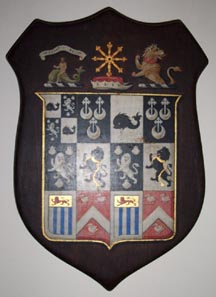
|
The seal pictured below,
about 1 3/4 inch diameter and apparently used to make an impression on
sealing wax, was inherited by Robert George Sewell and is said to have
belonged to Elizabeth Charlotte Monypenny. However, it contains the arms
of Dering, and the only connection with this family that we have found
is through Elizabeth's aunt Charlotte Dering (1762
- 1826) who was the second daughter of Sir Edward Dering. Perhaps
the seal was given to Elizabeth at the time of her Aunt Charlotte's death.
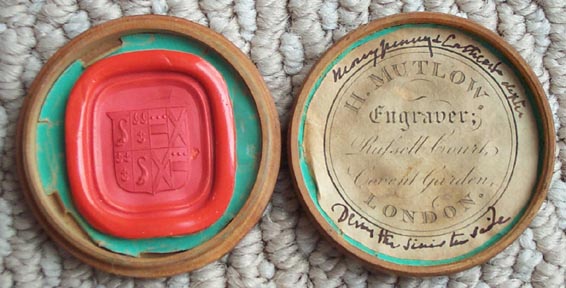
|
The written part appears to be (top)
"Monypenny & Cathcart dexter"
and (bottom) "Dering the sinister side."
| The coat of arms to the right
was drawn using the seal and the descriptions from tombstones at St.
Mary the Virgin Church in Rolvenden, Kent.
The description would be: the
dexter side Quarterly 1 & 4 argent, a dolphin naiant azure (Monypenny),
2 & 3 azure, 3 crosses crosslet fitchee issuing our of an many crescents
argent (Cathcart); the sinister side Quarterly 1 & 4 argent, a fess
azure in chief three torteaux gules (Dering); 2 & 3 or, a saltair sable
(unknown).
Please send further information to:
Robert
Sewell
For the continuation of this line
please click on: {Rev}
Henry Doyle Sewell
|
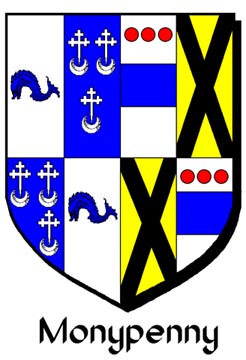 |
Click to read the actual Inscriptions
from St. Mary the Virgin Church in Rolvenden, Kent.
106 is in the Churchyard Section C on the North side of
the Church.
345, 347, 348, and 349 are within the church in the North
Chancel.
351 and 358 are within the church in the South Chancel.
Please visit the Sewell
Genealogy Site Map
click here to return to the top
 This page was set up by Robert Sewell in June 2006 to show the family of
Elizabeth Charlotte Monypenny who married {Reverend} Henry Doyle Sewell
in 1844. Robert Sewell graduated from McMaster University (Hamilton,
Ontario, Canada) in 1967 with a B.Sc. degree in chemistry. After
a year of studies at the University of Toronto's College of Education,
he taught high school science in Collingwood, Ontario for a year and then
taught chemistry, physics and general science in Hamilton, Ontario for
twenty-nine years. Robert Sewell retired from teaching in June 1998.
This page was set up by Robert Sewell in June 2006 to show the family of
Elizabeth Charlotte Monypenny who married {Reverend} Henry Doyle Sewell
in 1844. Robert Sewell graduated from McMaster University (Hamilton,
Ontario, Canada) in 1967 with a B.Sc. degree in chemistry. After
a year of studies at the University of Toronto's College of Education,
he taught high school science in Collingwood, Ontario for a year and then
taught chemistry, physics and general science in Hamilton, Ontario for
twenty-nine years. Robert Sewell retired from teaching in June 1998.

